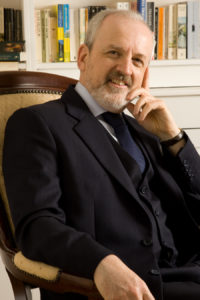 Last year I was sent a question by one of my younger E-Club Pro members who wanted some advice about how to put together a routine. He explained that he had plenty of tricks, but was looking for pointers about how to create a more flowing routine.
Last year I was sent a question by one of my younger E-Club Pro members who wanted some advice about how to put together a routine. He explained that he had plenty of tricks, but was looking for pointers about how to create a more flowing routine.
The first thing to say about this was that I was rather pleased that he was wanting to create a routine in the first place! I have always loved effects which comprise of several blended parts (my Master Routines are testament to that fact), but in many ways this feels a bit out of fashion.
When you look at nearly all the products that are marketed these days, virtually none of them are routines. They are mainly very quick magical effects that are over within seconds. There is little or no build up or presentation suggested, just a visually pleasing magical moment.
While there is nothing wrong with this as such, the problem arises when you are trying to put together an act. If you have 45 minutes to fill and all the tricks you own are over in under two minutes, it’s so much more difficult to create an act out of them.
That’s where routines are useful. Because they usually comprise of a number of linked magical moments or fun presentational sequences, it feels to the audience as if there is more substance to the performance, more ‘meat’ if you like. And if you can then find a way to segue from one routine to another, the entire act will seem more complete and homogenous.
So, how do you put together a routine? Of course, there are a number of different ways you can approach this. My favourite method is to create an effect that has three magical moments, ideally each one being stronger than the last. If you look at the Master Routines I mentioned earlier, many of those routines do have either three or sometimes four mini tricks built into them. Each effect is complete in itself, but is strengthened by the other magic that follows in the sequence using the same props. It creates a magical interlude that has a start, a middle and builds to a strong finish.
Another way to create a routine is to take unrelated tricks but find a way to link them together. For instance, you can do a trick with a sponge ball, and then at the end have it magically change into a silk. You then present something with the silk before it morphs into a deck of cards. This then leads you onto a card trick, and so on.
But you don’t have to rely on the tricks being visually linked, you can use a setting or presentational situation as a framework too. A lot of stage acts do this. The curtains open to show a park scene with a tramp lying on a bench. He stirs and gets up and magical things start to happen with the things on the set around him. Everything he picks up becomes a magical prop, and he looks as surprised as the audience as strange and wonderful things occur.
In this instance, the routine is created by the stage setting rather than the tricks themselves, and the magic all occurs within the framework of that scene, thus providing a pleasing, routined spectacle. And when you have this kind of set up, it helps you to choose the right tricks too, because the magic becomes defined by the setting, which means the tricks are seen to be more connected, rather than just a selection of totally unrelated material.
